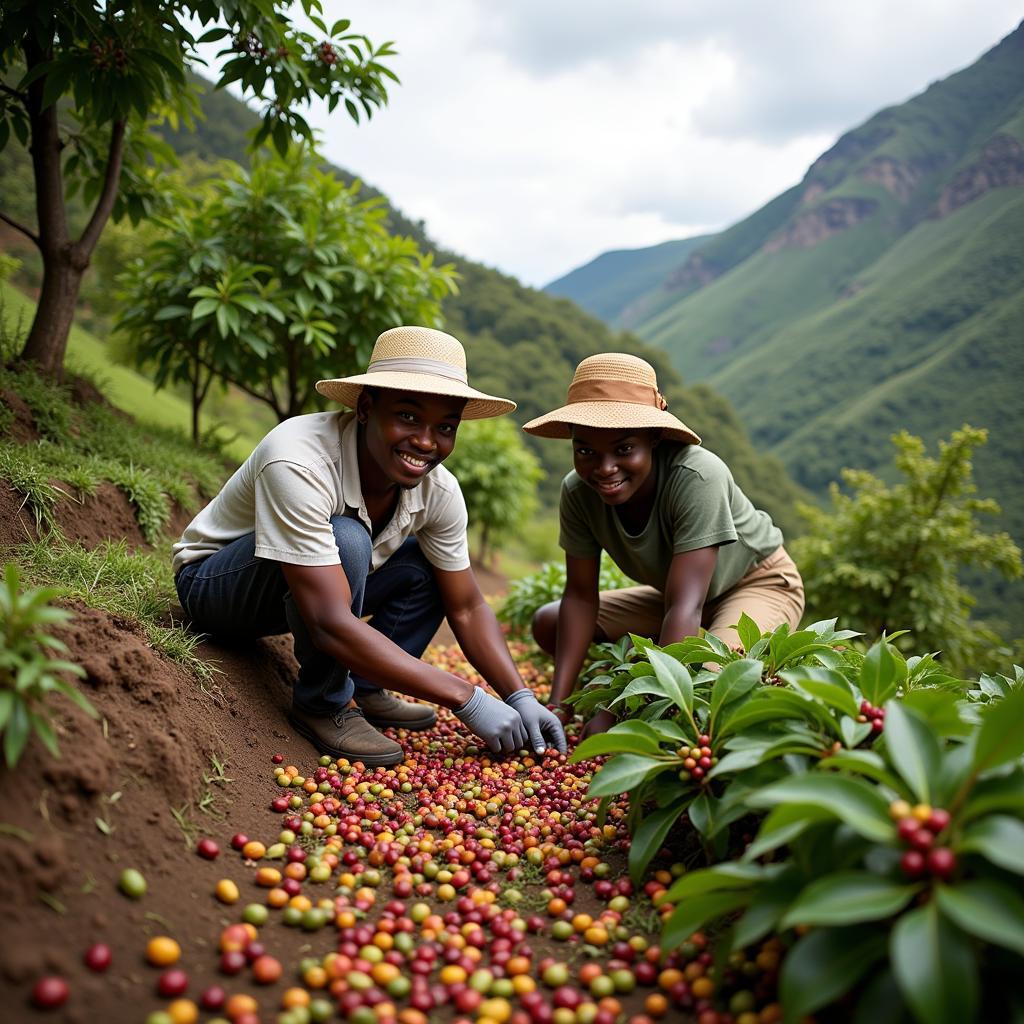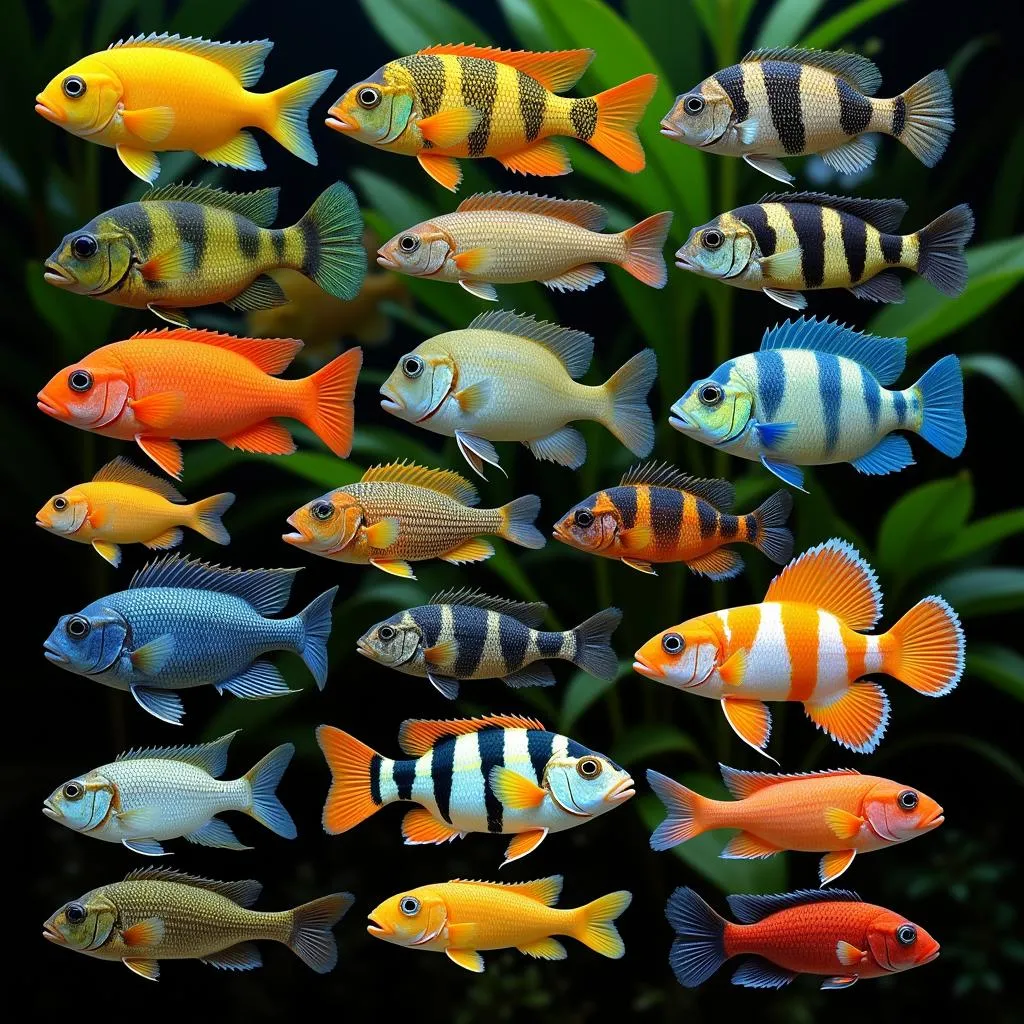The Vibrant World of African Block Print Cotton Fabric
African Block Print Cotton Fabric is more than just textile; it’s a vibrant tapestry of culture, history, and artistry. From the bustling markets of Accra to the serene landscapes of Tanzania, these bold and colorful fabrics tell stories that have been passed down through generations.
Unraveling the History of African Block Print Fabric
The art of block printing on fabric has ancient roots, with evidence suggesting its presence in Africa as early as the 12th century. While the exact origins are debated, there’s no denying the significant influence of trade routes, with techniques and patterns being shared and adapted across continents. Some historians believe that block printing arrived in Africa through trade with India and Indonesia, where the technique had flourished for centuries. Others point to evidence of indigenous printing methods using carved gourds and wooden stamps.
Regardless of its precise beginnings, African block printing truly blossomed when it merged with local aesthetics and traditions. Over time, distinct regional styles emerged, each with unique patterns, motifs, and color palettes.
The Making of a Masterpiece: Techniques and Traditions
Creating African block print cotton fabric is a labor of love, demanding skill, patience, and a deep understanding of traditional methods. Let’s delve into the fascinating process:
- Carving the Blocks: Artisans, often from families specializing in this craft for generations, meticulously carve designs onto wooden blocks. These designs can range from geometric patterns to intricate depictions of flora and fauna. Each block typically represents a single color or element of the final design.
- Preparing the Fabric: Cotton fabric is chosen for its durability and ability to absorb dyes readily. Before printing, the fabric is often washed, bleached, and treated with natural mordants to help the dyes adhere.
- Applying the Dyes: Natural dyes, derived from plants, roots, and insects, are often favored for their rich hues and sustainable qualities. The dyes are carefully mixed to achieve the desired shades.
- The Printing Process: This stage demands precision and a steady hand. The carved blocks are dipped into the dye and then pressed firmly onto the fabric, repeating the pattern along the length of the cloth. Multiple blocks with different colors and designs are used to create the final, layered effect.
A Kaleidoscope of Patterns and their Meanings
African block print fabrics are celebrated for their bold and vibrant patterns. But these designs are more than just decorative; they often carry deep cultural significance and symbolism. Let’s explore some common motifs and their interpretations:
- Geometric Patterns: Found in various forms across the continent, geometric patterns often symbolize concepts like community, unity, and the interconnectedness of life.
- Animal Motifs: From majestic lions to graceful antelopes, animals often represent strength, wisdom, or spiritual guides in many African cultures. The specific meaning can vary depending on the animal and the cultural context.
- Floral Designs: Flowers, often stylized and repeated in rhythmic patterns, can symbolize beauty, fertility, growth, and the ephemeral nature of life.
From Fashion to Home Decor: The Enduring Appeal
African block print cotton fabric has transcended its traditional uses and captivated the world with its versatility and timeless appeal. Here are just a few ways this extraordinary fabric is making its mark:
- Fashion: Designers globally are incorporating African block print fabrics into their collections, from casual wear to high fashion. These fabrics bring a unique vibrancy and cultural richness to dresses, skirts, shirts, pants, headwraps, and accessories.
- Home Decor: The bold patterns and colors of African block print fabrics are perfect for adding character and warmth to homes. Cushions, curtains, tablecloths, wall hangings, and upholstery are just a few examples.
- Accessories: The durable nature and vibrant designs make these fabrics ideal for creating bags, totes, backpacks, and other accessories.
Caring for Your African Block Print Treasures
To ensure your African block print cotton fabric lasts for years to come, proper care is essential. Here are some tips:
- Handwashing is Best: Handwashing with mild detergent in cool water is the gentlest way to clean these fabrics. Avoid harsh chemicals or bleach, which can fade colors.
- Air Dry in the Shade: Direct sunlight can fade the vibrant dyes, so it’s best to air dry your fabrics in the shade or indoors.
- Iron on a Low Setting: If ironing is needed, use a low heat setting and iron the fabric inside out to protect the print.
Conclusion
African block print cotton fabric is a testament to the creativity, artistry, and cultural richness of the continent. By appreciating the history, techniques, and symbolism woven into every thread, we can better understand the enduring appeal of these vibrant textiles. Whether you’re drawn to their bold patterns, vibrant colors, or the stories they tell, African block print fabrics offer a unique way to add a touch of global beauty to your life.
FAQs
1. What is African block print cotton fabric?
African block print cotton fabric is created using a traditional hand-printing technique where carved wooden blocks are dipped in dye and pressed onto the fabric, creating intricate patterns and designs.
2. Is African block print fabric only made in Africa?
While African block print fabric originated in Africa, the technique has gained global popularity, and similar fabrics are now produced in other parts of the world. However, fabrics made in Africa often hold special significance due to their connection to traditional techniques, materials, and cultural heritage.
3. How can I tell if African block print fabric is authentic?
Authentic African block print fabrics are often characterized by slight imperfections in the print, which are a result of the hand-printing process. The fabric may also have a slightly stiffer texture due to the use of natural dyes and mordants.
4. Is African block print fabric expensive?
The price of African block print fabric can vary depending on factors such as the complexity of the design, the quality of the cotton, the type of dyes used, and the origin of the fabric. However, it is generally considered a valuable and worthwhile investment due to its durability, unique beauty, and cultural significance.
5. Can I wash African block print fabric in a washing machine?
While it’s possible to machine wash African block print fabric on a gentle cycle with cold water, handwashing is always recommended to preserve the vibrancy of the colors and the longevity of the fabric.
Need more assistance? Contact us at +255768904061, email kaka.mag@gmail.com, or visit our store in Mbarali DC Mawindi, Kangaga, Tanzania. Our customer service team is available 24/7 to answer your questions and provide personalized guidance.
Explore more about African textiles and fashion on our website:
- Discover the elegance of African Ghana dresses.
- Explore the latest trends in African dresses styles 2020.
- Delve into the history of African kingdoms clothe.
- Learn about the diversity of African garb.



